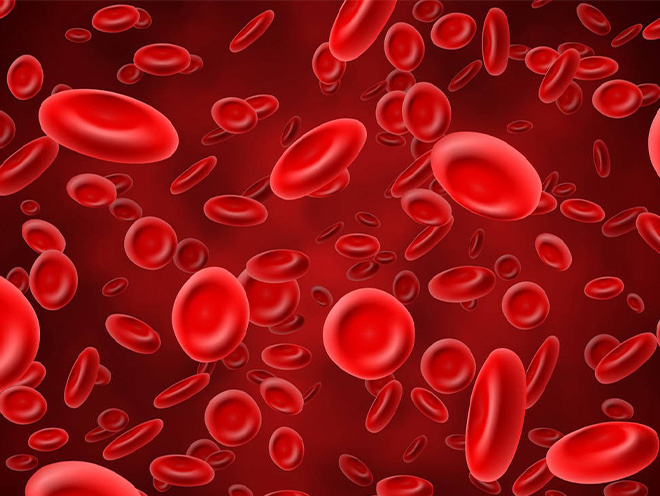 |

Lymphoma is one of the top ten common cancers in the Philippines, Among Filipino adults, incidence rate rises steeply starting age 50 among males and at age 55among females. Can lymphoma be treated? Minimally invasive technology has the advantages of few side effect, little trauma and quick recovery. With this cutting-edge technology, lymphoma patients can avoid the suffering of traditional chemotherapy and radiotherapy and prolong their life.
There are two main types of lymphoma, that is, Hodgkin lymphoma and Non-Hodgkin lymphoma, of which the latter is more common. There are many types of Non-Hodgkin lymphoma and it is mainly divided into acute Non-Hodgkin lymphoma and chronic Non-Hodgkin lymphoma. Based on the cell type, it can be divided into cell B lymphoma and cell T lymphoma, while the former is more common.
For more knowledge about cancer, please click online doctors for consultation.




Symptoms of Chronic Leukemia
1、In the early stages of chronic leukemia, symptoms may not appear for a long time, thus the patients cannot feel any discomfort. Doctors will usually find abnormal blood picture or splenomegaly (enlarged spleen) during a routine checkup or examinations for other diseases and then the patients are diagnosed with chronic leukemia.
2、When symptoms do appear, they are generally mild at first and progress gradually. Common symptoms of chronic leukemia may include: fatigue, low heat, excessive sweat or night sweats, weight loss for unknown reason, and hyperthyroidism, in addition, left upper abdominal distension and sensation of fullness after eating (due to enlarged spleen).
3、Patients with chronic leukemia often manifest as pale complexion, pale lips, and splenomegaly which is the most obvious symptom and which often has reached umbilical plane when patients visit a doctor, furthermore, tenderness in the lower part of sternum. Patients with advanced chronic leukemia will appear tiny red spots under the skin, mucous, and painless mass in the tissues of eye sockets and skull.
Symptoms of Acute Leukemia
1、Anemia: hematopoietic abnormalities of bone marrow leads to low number of both red blood cells and hemoglobin, thus anemia will be developed and half of the patients can develop severe anemia.
2、Fever: leukemia itself can cause fever, furthermore, due to decreased immunity, once pathogens invading body, thus it tends to cause infection and results in fever.
3、Bleeding: due to stasis and infiltration of the large number of leukemia cells in blood vessels, low number of platelets, coagulation abnormalities and infection, patients will appear scattered red spots, purpura or petechia from head to foot, nosebleed, gingival bleeding or excessive menstruation, furthermore, blurred vision resulting from fundus hemorrhage, coma and even death due to intracranial hemorrhage can be caused.
4、Gastrointestinal failure: it can result from agents used in chemotherapy and radiation therapy which will affect gastrointestinal function.
5、Hyperuricemia: it can be caused by chemotherapy, radiotherapy and application of cortical hormone, what’s more, with high concentration of uric acid supersaturated soon and precipitated, oliguria and anuria will be caused by extensive damage of kidney and the formation of uric acid stones.
Symptoms of Leukemia in Children
Symptoms of early leukemia in Children are pale complexion, fatigue, lassitude, loss of appetite, nasal bleeding or bleeding gums, etc.; few patients firstly manifest as fever and bone joint pain which is similar to rheumatic fever.
1、Anemia: it appears early and aggravates progressively, besides, it manifests as pale complexion, weakness, shortness of breath after activity, and tachycardia (too fast heartbeat).
2、Fever: it often occurs with uncertain types and mostly is irregular fever with no shivering. Leukemia fevers mostly manifest as low heat and antibiotic treatment is ineffective; secondary infections (respiratory tract infections, urinary tract infection, etc.) mostly are high heat.
3、Bleeding: main reasons of bleeding are firstly, leukemia cell infiltration thus bone marrow megakaryocyte will be inhibited, causing low number of platelet; secondly, impaired liver function causes insufficient production of fibrinogen, thrombinogen and accelerin; thirdly, capillary permeability increases. Most of bleeding occurs in the skin and mucous membrane, manifesting as purpura, petechia, nosebleed, gingival bleeding, gastrointestinal hemorrhage and hematuria, in addition, occasionally intracranial hemorrhage which is one of the important causes of death.
To know and identify the symptoms of leukemia can help patients detect it early and then get treatment in time.
For more knowledge about cancer, please click online doctors for consultation.
What are detections for leukemia? Most people are inclined to know the detections of leukemia, for that can help to find out related symptoms and perform treatments in time.
Common Detections Of Leukemia
1、Blood routine examination. It is to take a little blood from finger or ear lobe to check the quantity of red blood cells, white blood cells and platelet, meanwhile to classify the white blood cells. Normally, juvenile blood cells (for short is juvenile cells) should not appear in peripheral blood. But when someone is suffering from leukemia, juvenile cells can be seen in blood routine test for they are released to peripheral blood while they are not differentiated and mature enough in bone marrow.
2、Routine examination for bone marrow. If it is suspected to have leukemia, bone marrow puncture test is necessary to count and classify all kinds of cells from bone marrow. Normally juvenile cells take not over 5% in bone marrow. But when one develops leukemia, his juvenile cells can increase at most 30% more, especially for acute leukemia of children, that can reach 80- more in bone marrow.
Bone marrow examination is a most weightily proof to diagnose leukemia. It is not difficult to detect leukemia by combing with clinical signs and physical examinations when this bone marrow examination indicating an obvious increase of juvenile cells in bone marrow. However, treatments would be different as the types of leukemia vary. Then further examinations should be taken to confirm the type of leukemia.
1、Immune typing examination. It generally has to take around 2 ml bone marrow to identify and classify the leukemia cells with a reagent named clonal antibody.
2、Cytogenetic examination. This examination also has to take about 2 ml bone marrow to know if any abnormality of leukemia essence and chromosomes. The prognosis usually would be poorer to the leukemia patients with chromosome disorder than those without chromosome abnormality.
3、Examination of cerebrospinal fluid is to confirm if leukemia cells encroach on brain and spinal system by drawing out a little cerebrospinal fluid from lumbar spinal canal of patient for chemical examination. If being encroached, that is what medically called leukemia of central nervous system.
Specialist from St. Stamford Modern Cancer Hospital Guangzhou figured out that, except what mentioned above, there are X-ray examination (including chest X-ray, skull X-ray and bone X-rays of limbs and so on) examination of ocular fundus, ECG(electrocardiogram), ultrasonic examination of liver and spleen, blood biochemistry, immune functions, related virus examination and so on. All those examinations can indicate that whether the main organs of patient are working normally and if any encroachment of leukemia cells occurs, which at the same time are the preparation and direction for further treatments.
For more knowledge about cancer, please click online doctors for consultation.
 Leave
Leave